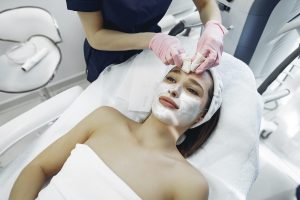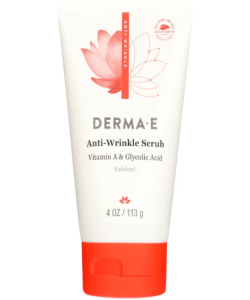Beauty Salons Tips – Using a Clay Mask
In beauty salons, clay masks are nature’s way of maintaining healthy skin. With almost no damage to the skin, they provide a glow that remains. However, like with everything, it is not advisable to use it too often as it will dry out your skin.
What are Clay Masks?
Clay is a natural substance found in nature and used for its multiple benefits. Because of its composure, the clay is rich in electrically charged minerals. Essentially, we use five different types of clay. Each clay has unique properties that makes it beneficial for different skin types. But the one thing common in all of them is that they all are rich in minerals and potassium that help maintain skin composure for a glowing and shiny look.
Beauty Salons Tips: How Often to Use a Clay Mask?
People often use clay masks to treat acne-prone skin. They are equally beneficial for hydrating it. Therefore, the question of how often to use a clay mask depends upon various factors. You need to know the mask’s active ingredients and the function they provide, combined with your own need. Every substance has its unique qualities that react differently from others.
As a beauty salon rough rule, you can apply the clay mask once or twice a week for not more than 15 minutes. This is depending upon how long they have been used earlier. Let us study how you can use a clay mask for different purposes and how often you can apply them.
1. Using clay mask as a detoxing agent or to treat acne.
For centuries, clay masks have been a detox agent because they can unclog pores and draw out impurities for healthier-looking skin. It is ideal for getting rid of acne; however, you should not use it more than once a week, and that too for only 20 minutes. Beauty salon tip: This mask will dry up your skin, and too much use would damage it.
2. Using clay mask to brighten up your skin
If your skin starts to look dull, it requires some maintenance. Use a clay mask to exfoliate it and eliminate the dead cell gently. Do not use this mask more than twice a week and not more than 10 minutes a time. Your skin will start glowing within a week of using it.
3. Using clay mask to make your skin matte
Clay masks made of fuller earth are the best drying agent you can come across. For oily or/ and combination skin, you can use this mask to dry it up and bring a matte look to your face. It will help bring out the impurities and leave the skin shine-free.
Using a clay mask more than three times a week is not wise, and it should be worn for 10 minutes.
4. Using clay mask as a moisturizer
The clay masks have been used for centuries as a moisturizer. Add rose water to fuller earth, and it will act as a moisturizing agent.
Because of its awesome ability to draw out impurities, it leaves the skin shiny and healthy looking. But do not use it more than three times a week. And definitely for only 10 minutes every use.

As a beauty salon rough rule, clay masks can be applied once or twice a week for not more than 15 minutes.
What Is a Clay Mask Good For?
For hundreds of years clay is one of the most ancient beautifying agents. The women, as well as men use the clay mask as a skin care product as it is well known for its cleansing and purifying qualities. It works ideally for all types of skins in beauty salons. It gets rid of the extra oils by unclogging the pores. This also helps in getting rid of acne. It is beneficial for dry skin as it is the best moisturizer. There are different clays; the differentiation is based on their constitution. Here is a breakout of all the clays and for what they are suitable.
1. Fullers Earth
It is suitable for oily skin and acne-prone skin. The drying agent in this clay helps control oil and cleanses the skin. It is not advisable to use it more than once a week as it dries the skin.
2. Bentonite Clay
This clay has the unique capability of absorbing more impurities than its mass. It brings down swellings and helps tighten skin. If you are using it as an anti-acne agent, use it a maximum of 3 times a week; otherwise, only once a week.
 3. Kaolin Clay
3. Kaolin Clay
This clay is used most often in cosmetic products. Its benefits differ with its colors as it is available in 4 varieties. White, pink, red, and yellow. The use and the functions vary accordingly.
- White Kaolin Clay is best suitable for sensitive skin. It is gentle, possesses moisturizing properties; use it thrice a week for gentle cleansing.
- Red Kaolin Clay is powerful and removes a lot of impurities. Do not use it more than once a week.
- Pink Kaolin Clay is a mixture of red and white clay. The intensity of this clay depends upon the mixture, and people with oily skin can also use it.
- Yellow Kaolin Clay is for exfoliation mainly. It is perfect for boosting circulation and can be used once a week.
- Rhassoul Clay is as ancient as the earth itself. It is mined in Morocco and is known for its absorbing properties, which quickly absorb sebum and blackheads. It is also suitable for hair to boost volume.
4. French Green Clay
Widely used in beauty salons, this clay is known for its power to absorb impurities and improve blood circulation.
How Long Do You Leave the Clay Mask on for?
As discussed above, different clay masks have different properties. They require different times to accomplish their tasks. It also depends upon the skin texture. Generally, 15 minutes is the ideal time to leave the mask. If you have sensitive skin, do not use a clay mask more than once a week and only for 10 minutes. Rest, you should follow the directions given.
Do Clay Masks Actually Work?
The use of clay masks goes way back in history, and we can trace it back to 5000 years. It was and still is used for beauty treatments forever. The main reason is its variable properties. Dry texture is suitable for absorbing excess oil, whereas the exfoliating nature of the clay gently cleanses the skin. The natural mineral act as a moisturizer to dry skins. It is a detox agent for the skin, removes impurities, and revitalizes it. Most skin specialists agree that the natural composition of clay is beneficial, no matter your skin type. The beauty salons trick lies in using the clay according to the skin type.





